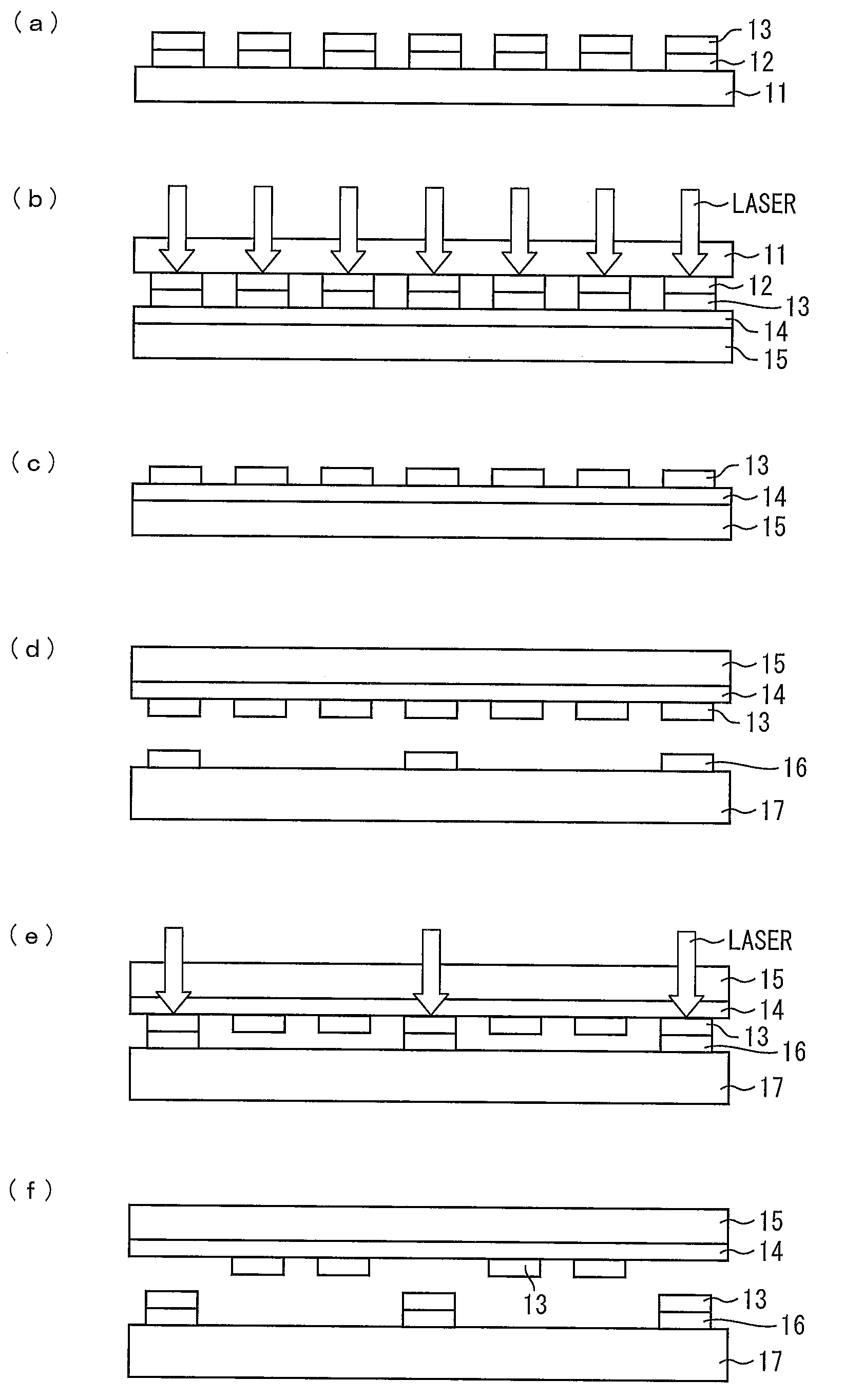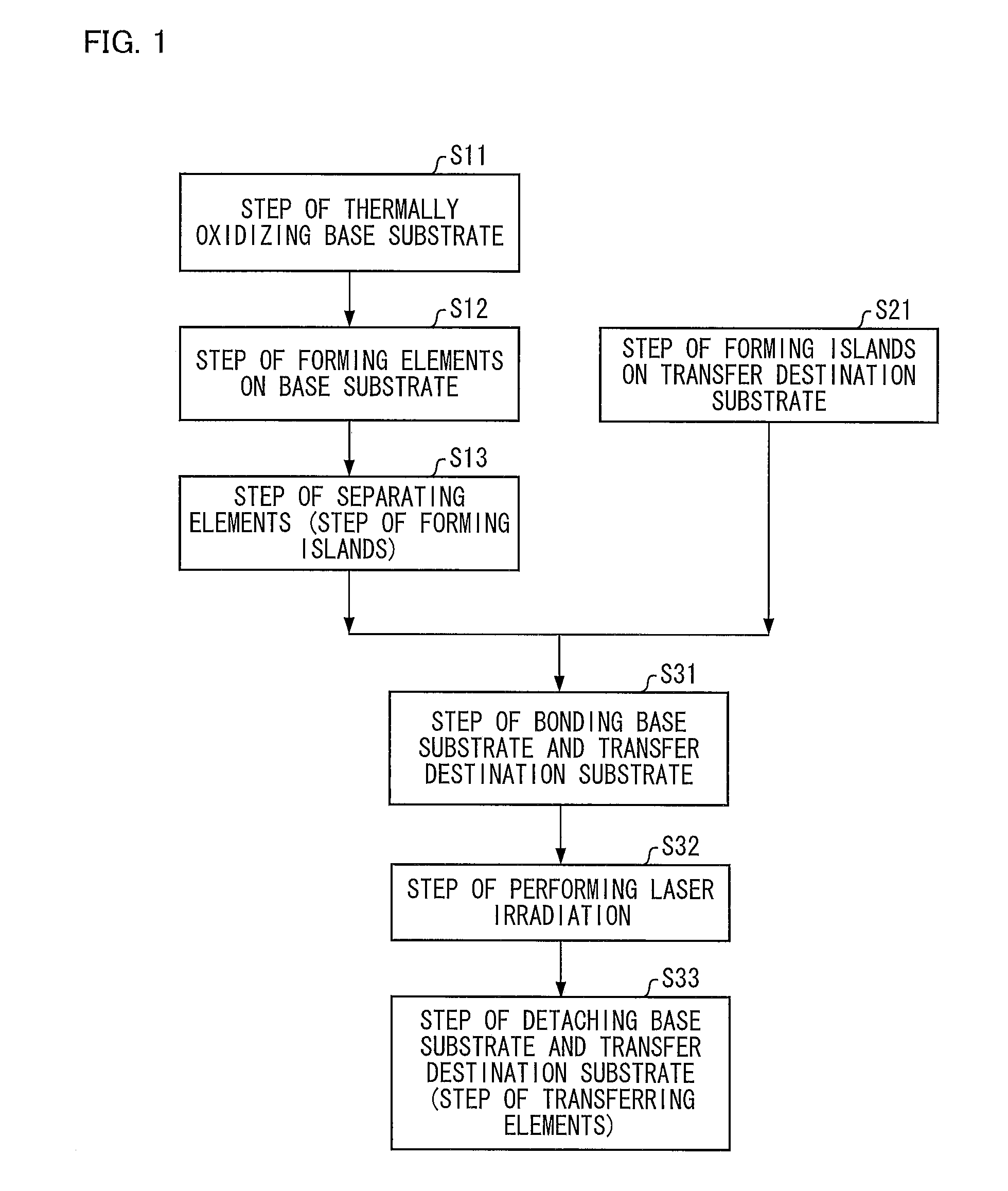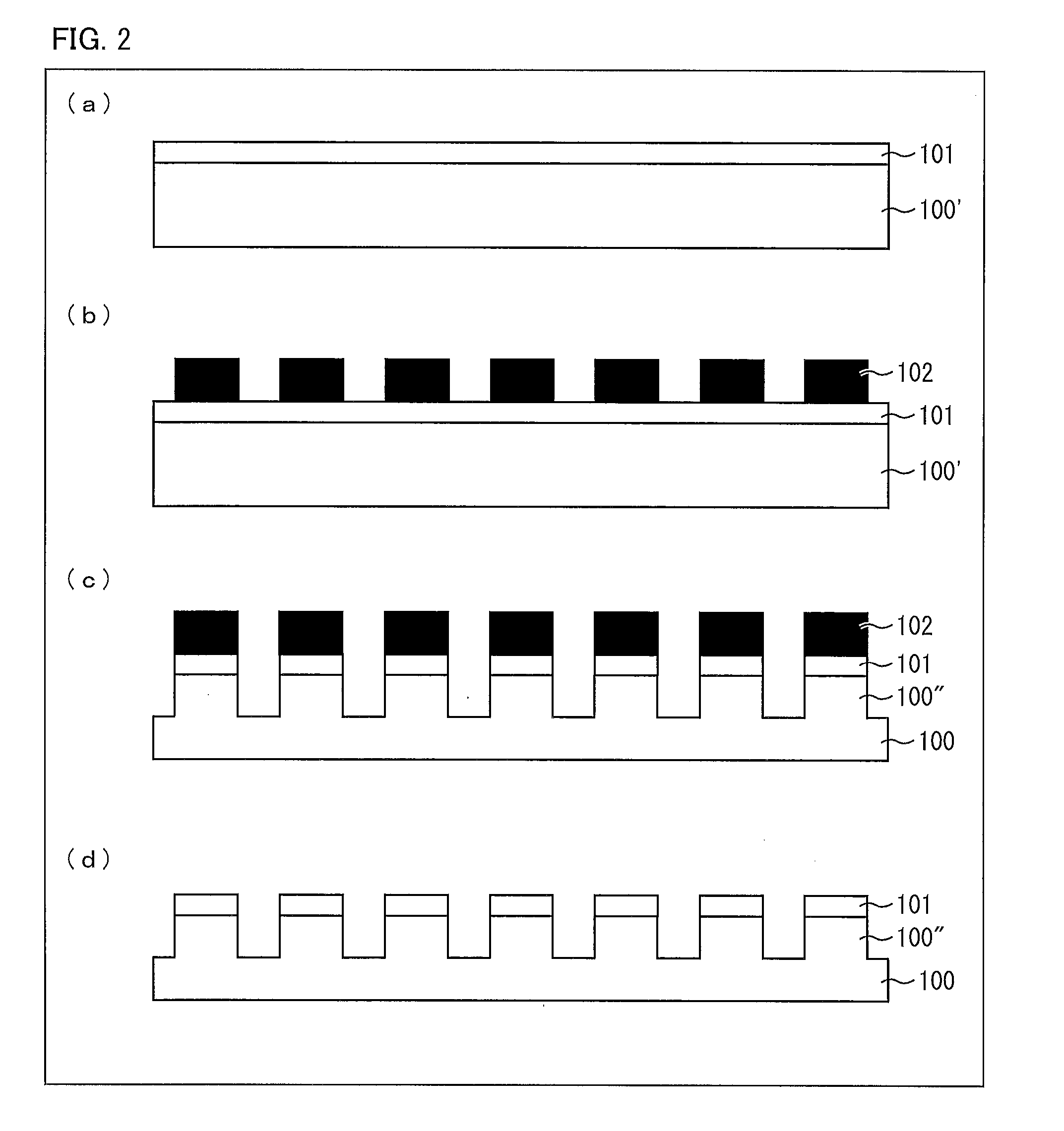Method for manufacturing semiconductor device, and semiconductor device
a manufacturing method and semiconductor technology, applied in the direction of semiconductor devices, basic electric elements, electrical appliances, etc., can solve the problems of huge device and enormous investment, and difficult to reduce a manufacturing cost, so as to shorten the manufacturing process, reduce the manufacturing cost, and reduce the manufacturing cos
- Summary
- Abstract
- Description
- Claims
- Application Information
AI Technical Summary
Benefits of technology
Problems solved by technology
Method used
Image
Examples
first embodiment
[0078]First Embodiment of the present invention is described below with reference to FIGS. 1 through 4. FIG. 1 is a flow chart showing main steps of the method of the present invention for manufacturing a semiconductor device. FIG. 2 is a cross-sectional view illustrating main steps of a method for forming a base substrate. FIG. 3 is a cross-sectional view illustrating main steps of a method for forming a transfer destination substrate. FIG. 4 is a cross-sectional view illustrating main steps of a method for transferring desired thin films from the base substrate onto the transfer destination substrate.
[0079]First, the steps for forming a Si substrate 100 is described with reference to FIG. 2.
[0080]As illustrated in (a) of FIG. 2, a plate-like Si substrate 100′ is thermally oxidized so as to form a thermally-oxidized film 101 having a thickness of approximately 50 nm to 100 nm on a surface of the Si substrate 100′ (S11 of FIG. 1, thermal oxidation step). In the present embodiment, t...
second embodiment
[0101]The present embodiment discusses an example in which monocrystalline Si thin films (elements) formed on a Si substrate are directly transferred onto a glass substrate so that the monocrystalline Si thin films are distributed on the glass substrate, as in First Embodiment. Unlike First Embodiment, the present embodiment discusses an example in which a step of forming, in advance inside the base substrate, a fragile layer that is weaker than other parts of the substrate is added in order to make separation along a modified layer formed in the glass substrate easier.
[0102]FIG. 5 is a cross-sectional view illustrating steps for forming a Si substrate 100 of the present embodiment. Unlike the steps for forming the Si substrate 100 in First Embodiment, the formation process of the Si substrate 100 according to the present embodiment includes a step of forming a fragile layer 104 inside the Si substrate 100 in advance. The steps other than this step are identical to those explained i...
third embodiment
[0108]The present embodiment discusses an example in which, instead of the fragile layer, a light absorbing layer which absorbs more light than the other parts of the substrate is formed in advance inside the main body of the base substrate in order to make the separation along the modified layer formed inside the Si substrate easier. Steps other than the light absorbing layer formation step are identical to those described in First and Second Embodiments, and are therefore described briefly. Note that the present embodiment is described with reference to identical drawings to those of Second Embodiment.
[0109]In the formation process of the Si substrate 100 according to the present embodiment, first, a thermally-oxidized film 101 is formed on a plate-like Si substrate 100′ as illustrated in (a) of FIG. 5, and then a light absorbing layer 105 is formed inside the Si substrate 100′ as illustrated in (b) of FIG. 5.
[0110]Specifically, an ion is implanted into the Si substrate 100′ at a ...
PUM
 Login to View More
Login to View More Abstract
Description
Claims
Application Information
 Login to View More
Login to View More - R&D
- Intellectual Property
- Life Sciences
- Materials
- Tech Scout
- Unparalleled Data Quality
- Higher Quality Content
- 60% Fewer Hallucinations
Browse by: Latest US Patents, China's latest patents, Technical Efficacy Thesaurus, Application Domain, Technology Topic, Popular Technical Reports.
© 2025 PatSnap. All rights reserved.Legal|Privacy policy|Modern Slavery Act Transparency Statement|Sitemap|About US| Contact US: help@patsnap.com



